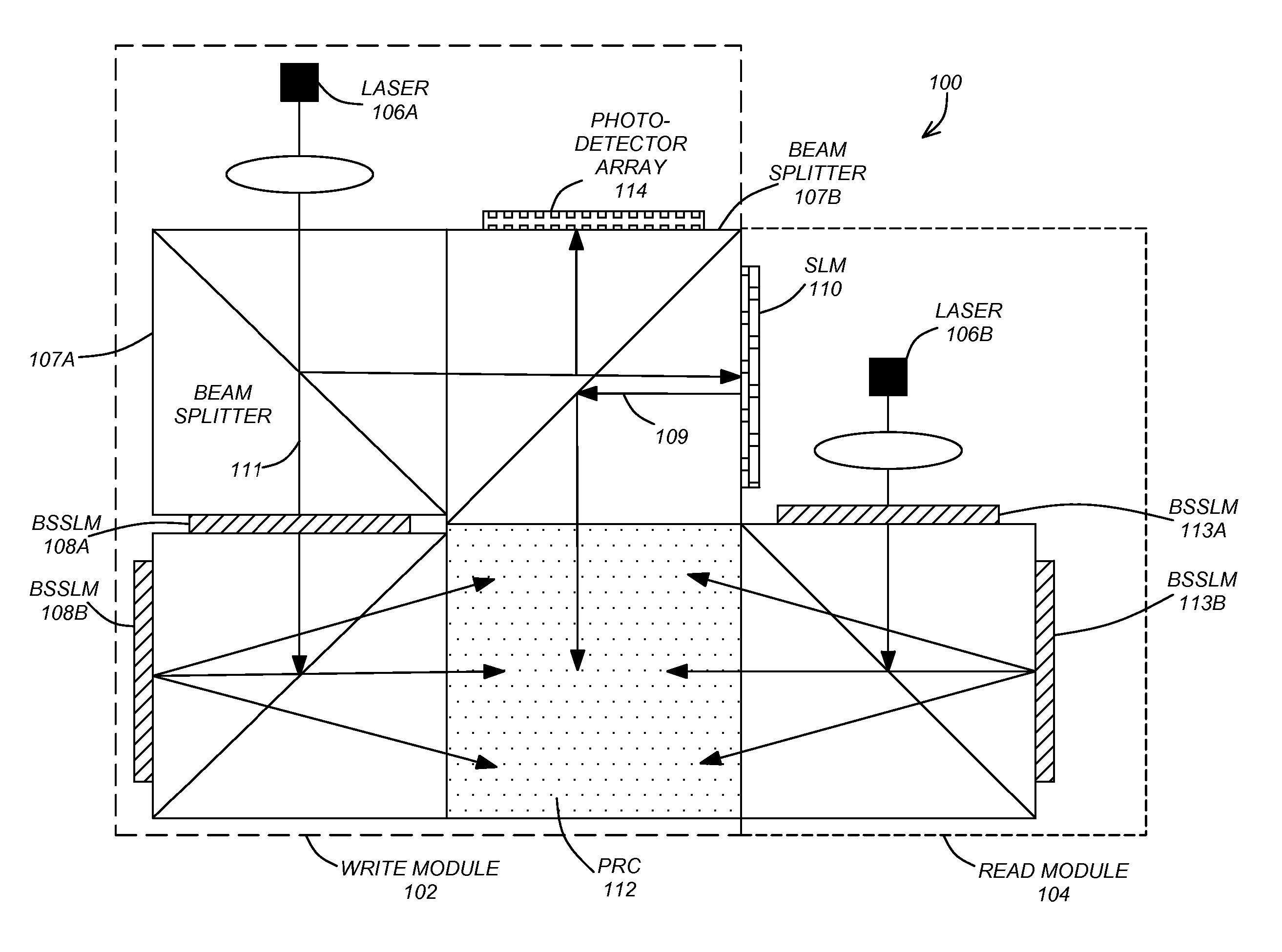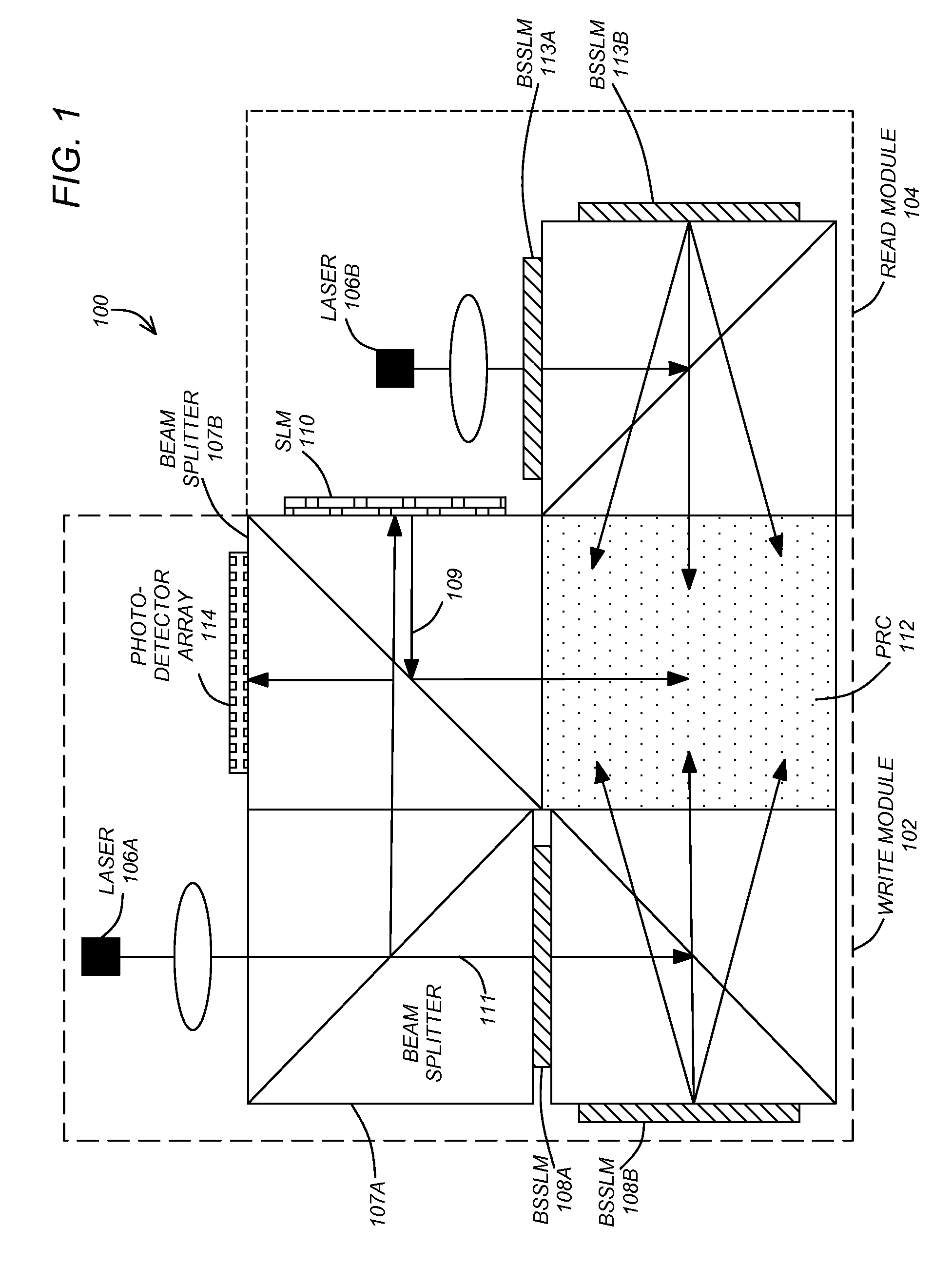Holographic memory using beam steering
a beam steering and holographic memory technology, applied in the field of holography, can solve the problems of flash memory facing two insurmountable limitations, limited transfer and capacity capabilities of prior art optical storage methods, and inability to read data from storage media at the same time, and achieves significant radiation resistance performan
- Summary
- Abstract
- Description
- Claims
- Application Information
AI Technical Summary
Benefits of technology
Problems solved by technology
Method used
Image
Examples
Embodiment Construction
[0039] In the following description, reference is made to the accompanying drawings which form a part hereof, and which is shown, by way of illustration, several embodiments of the present invention. It is understood that other embodiments may be utilized and structural changes may be made without departing from the scope of the present invention.
[0040] As described above, holographic data storage may store data in a large number of holograms inside of a photorefractive crystal. Holograms may be formed by recording (in a cubic photorefractive crystal) the light interference pattern caused by a data beam carrying page data (image or binary bits) and a reference laser beam. Since these images are stored in the Fourier domain and recorded in three dimensions, massive redundancy is built into the holograms such that the stored holograms would not suffer from imperfections in the media or point defects.
[0041] The LiNbO3 photorefractive crystal has been the mos...
PUM
 Login to View More
Login to View More Abstract
Description
Claims
Application Information
 Login to View More
Login to View More - R&D
- Intellectual Property
- Life Sciences
- Materials
- Tech Scout
- Unparalleled Data Quality
- Higher Quality Content
- 60% Fewer Hallucinations
Browse by: Latest US Patents, China's latest patents, Technical Efficacy Thesaurus, Application Domain, Technology Topic, Popular Technical Reports.
© 2025 PatSnap. All rights reserved.Legal|Privacy policy|Modern Slavery Act Transparency Statement|Sitemap|About US| Contact US: help@patsnap.com



